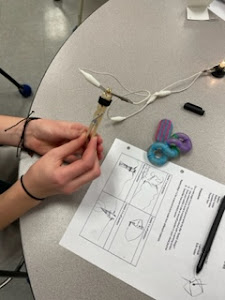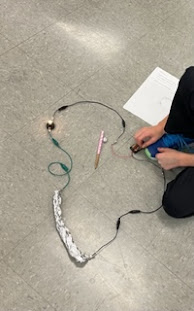Blog Post 25
March 6-9
Learning Outcomes
Science - Electricity & Magnetism
-Demonstrate that a continuous loop of conducting material is needed for an uninterrupted flow of current in a circuit.
-Distinguish electrical conductors—materials that allow electricity to flow through them— from insulators—materials that do not allow electricity to flow through them.
- Recognize and demonstrate that some materials, including resistors, are partial conductors of electricity.
-Predict the effect of placing an electrical resistance in a simple circuit; e.g., in a circuit with a light bulb
What Did Students Do?
Students created circuits using batteries, wires, and bulbs. They added switches to their circuits to be able to turn the electricity to the bulb on and off. Students learned about conductors and insulators as well as series circuits and parallel circuits.
We put both grade five classes together and separated them into groups of 3 or 4. Students were then given a variety of materials such as styrofoam balls, cups, metal fasteners, paper clips, papers, clothespins, etc. They had to create switches using their materials. They thought of things we could never have predicted. What a creative group of students! After two successful switches had been created, students were asked to draw a diagram of their design and write a short description about it.
Family Connections
Ask your child:
-what are conductors and insulators?
-what materials conduct electricity?
-how do you make a simple circuit?
-what materials and design did you do to create switches?
Coming Up
-Unfortunately, due to significant illnesses on their staff, Trickster has been postponed until May 8-12th. We look forward to exploring with them then.
-March 25th - April 2nd - SPRING BREAK! No school for students or staff. Classes resume on April 3rd.





Comments
Post a Comment